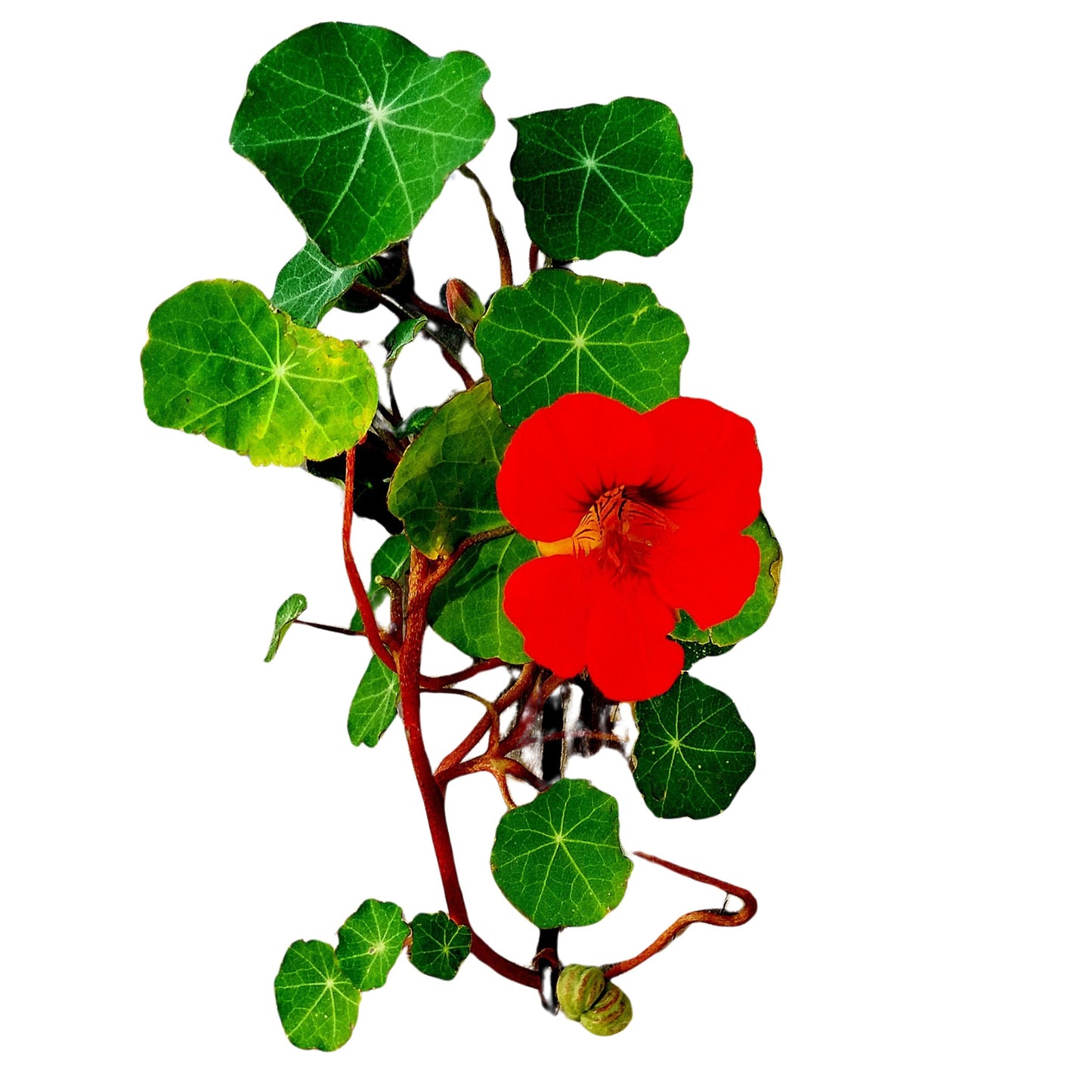Jonquil
Nasturtium Globe of Fire - 5 Seeds
Nasturtium Globe of Fire - 5 Seeds
Couldn't load pickup availability
Nasturtium 'Globe of Fire' (Tropaeolum majus) is a bushy, compact variety that produces fiery orange-red blooms with a striking contrast against its round, dark green foliage. The flowers are 5–7 cm in diameter and have a mildly peppery scent, attracting bees, butterflies, and other pollinators.
Growing to a height of 30–40 cm with a spread of 40–50 cm, this variety is perfect for garden borders, flower beds, rock gardens, hanging baskets, and containers. Nasturtium 'Globe of Fire' is an easy-to-grow, fast-maturing annual that thrives in a variety of conditions and even performs well in poor soils.
Additionally, the flowers, leaves, and young seed pods are edible, offering a peppery, mustard-like flavour that enhances salads and garnishes.
Detailed Growing Guide
Soil Requirements
Prefers well-drained, moderately fertile, or poor soil.
Avoid overly rich soil, as it promotes excessive leafy growth and fewer flowers.
Ideal soil pH: 6.0–7.5.
Sunlight & Location
Requires full sun (at least 6 hours per day) for the best flowering results.
Can tolerate partial shade, but flowering may be reduced.
Suitable for borders, pathways, containers, and hanging baskets.
Thrives in coastal areas and dry conditions due to its drought tolerance.
Planting & Germination
Starting from Seeds (Indoors & Outdoors)
Indoor Sowing:
Start 2–4 weeks before the last frost in small pots or seed trays.
Sow seeds 1–2 cm deep in well-draining potting mix.
Keep soil moist but not soggy at a temperature of 18–22°C.
Germination occurs within 7–14 days.
Transplant outdoors after the last frost when temperatures remain above 10°C.
Direct Sowing (Recommended for Best Growth):
When: Sow seeds directly after the last frost when soil has warmed to at least 10–15°C.
Spacing: Plant seeds 20–30 cm apart to allow for full, bushy growth.
Depth: Sow 1–2 cm deep and cover lightly with soil.
Watering
Water moderately—nasturtiums prefer slightly dry soil over wet conditions.
Once established, they are drought-tolerant and require minimal watering.
Avoid overwatering, as it can lead to root rot and fungal issues.
Fertilization
Minimal feeding required. Avoid high-nitrogen fertilizers, which encourage leaf growth but reduce flowering.
If necessary, apply a diluted balanced fertilizer once at planting time.
Maintenance & Pruning
Deadhead spent flowers to prolong blooming and encourage new growth.
If the plant becomes too leggy, trim back by a few centimetres to promote compact growth.
Can self-seed if flowers are left to mature, leading to natural regrowth the following season.
Pest & Disease Control
Natural Pest Repellent: Nasturtiums repel aphids, whiteflies, and cucumber beetles, making them an excellent companion plant for vegetables.
Common Pests: If aphids appear, spray with a mild soapy water solution or neem oil.
Diseases: Generally disease-resistant but can be affected by powdery mildew in humid conditions—improve air circulation and avoid overhead watering.
Harvesting (Edible Flowers, Leaves & Seeds)
Leaves & Flowers: Can be harvested at any time for salads and garnishes.
Seed Pods: Young, green seed pods can be pickled and used as "poor man's capers."
Self-Seeding: If left on the plant, mature seeds will drop and germinate the following year.
Key Benefits of Growing 'Globe of Fire' Nasturtiums
Compact, bushy growth, ideal for small spaces and containers.
Brilliant red-orange blooms that last all season.
Edible flowers, leaves, and seeds—great for culinary use.
Low-maintenance and drought-tolerant, perfect for beginners.
Pest-repelling properties, making it an ideal companion plant for vegetables.
Would you like companion planting suggestions or tips on maximizing flower production?
Share


